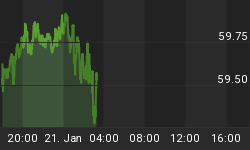It is January. Must be time to dust off the old "first five trading days of January indicator" and follow that with the "January Effect." We have assembled the statistics for these two "popular in January" indicators. We selected the Dow Jones Industrial Average from 1886-2004 for our study. Rather than just looking at January alone, we have chosen to show results for all "first five trading days" of each month and all 12 months for the "Monthly Effect." Our study is presented in the tables and notes below.
The First Five Trading Days of the Month Effect
Dow Jones Industrial Average 1886-2004

Table Notes:
- The probabilities for the 12 month time period being positive when the first five trading days of a given month are positive range from 71.4% (May) to 63.6% (October).
- The probabilities for the 12 month time period being negative when the first five trading days of a given month are negative range from 51.2% (December) to 31.6% (March).
- If one were making a decision to buy on the "first five trading days" rule for any given month, May would be the first choice followed by January (71.1%).
- The "first five trading days" rule does not appear to provide good odds for making a sell decision based on negative results. However, one might consider buying against the rule in March with the odds of the 12 month results being positive at 68.4%.
The Monthly Effect
Dow Jones Industrial Average 1886-2004

Table Notes:
- Monthly results are shown two different ways in our table: for the entire twelve month period including the month under examination and for the ensuing 11 months after the signal is given. We prefer the latter.
- The probabilities for the 12 month time period being positive when the month is positive range from 77.9% (January) to 64.6% (December), while the probabilities for the ensuing 11 month time period being positive when the month is positive range from 70.1% (January) to 58.5% (December).
- The probabilities for the 12 month time period being negative when the month is negative range from 61.9% (January) to 39.6% (March), while the probabilities for the ensuing 11 month time period being negative when the month is negative range from 50.0% (January) to 30.8% (October).
- If one were making a decision to buy on the "monthly effect" rule for any given month, January would be the choice using either full 12 months results (77.9%) or ensuing 11 month results (70.1%).
- The "monthly effect" rule does not appear to provide good odds for making a sell decision based on negative results. January at 61.9% is above average, but falls off to 50% when the ensuing 11 month criteria is applied. October provides the best opportunity to buy against the rule with the odds being positive at 69.2% when using the ensuing 11 months as the measuring tool.
















